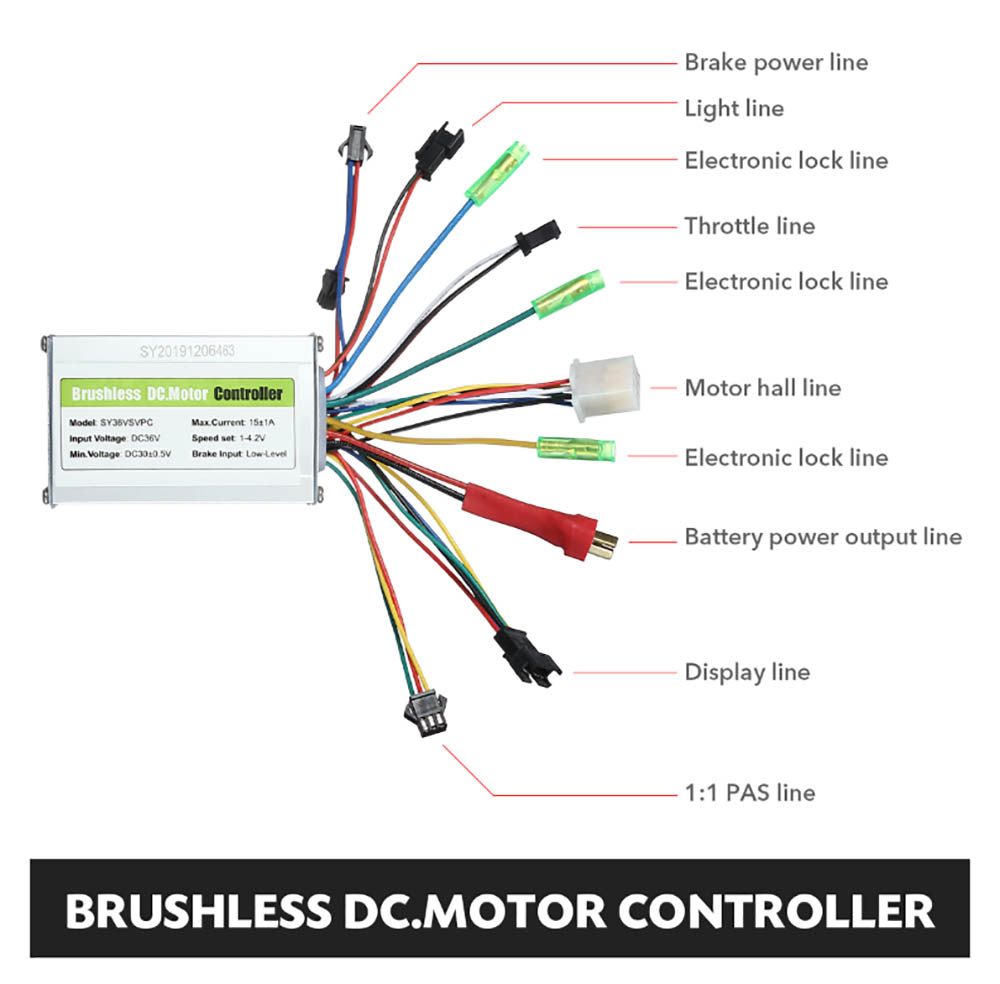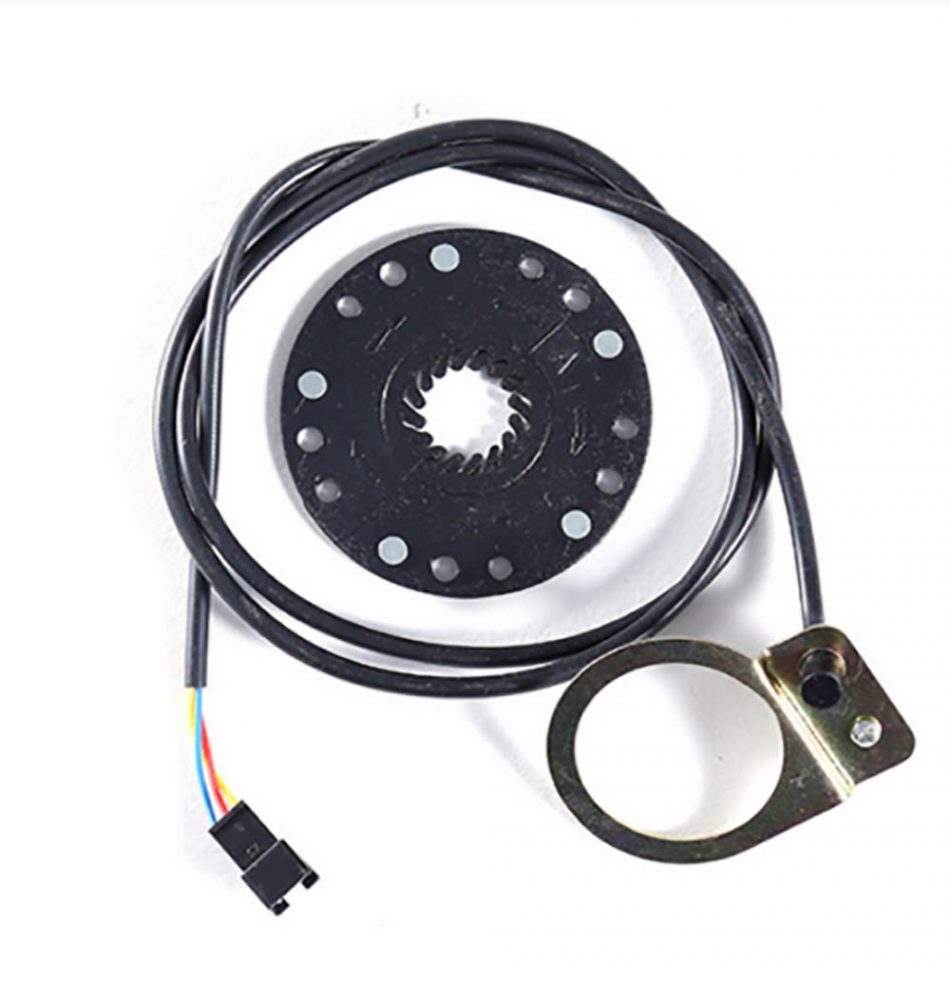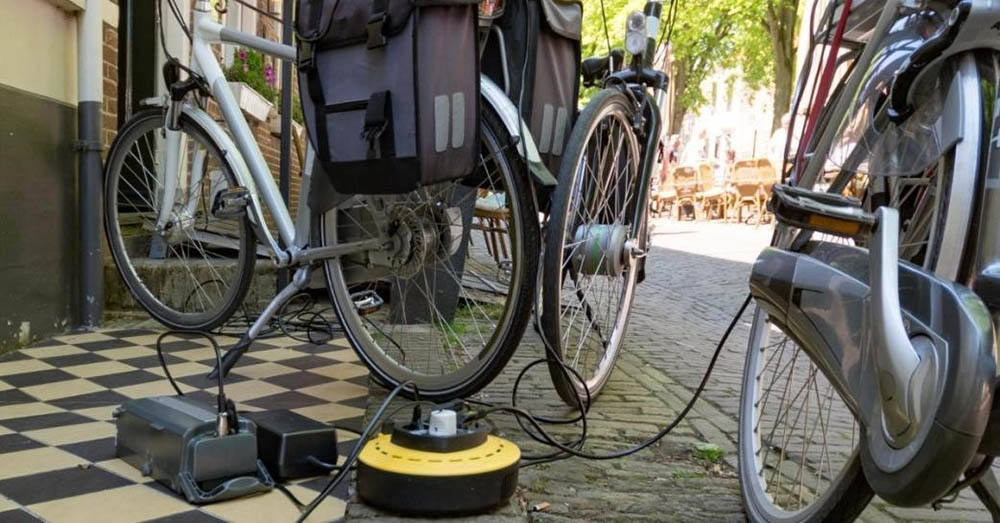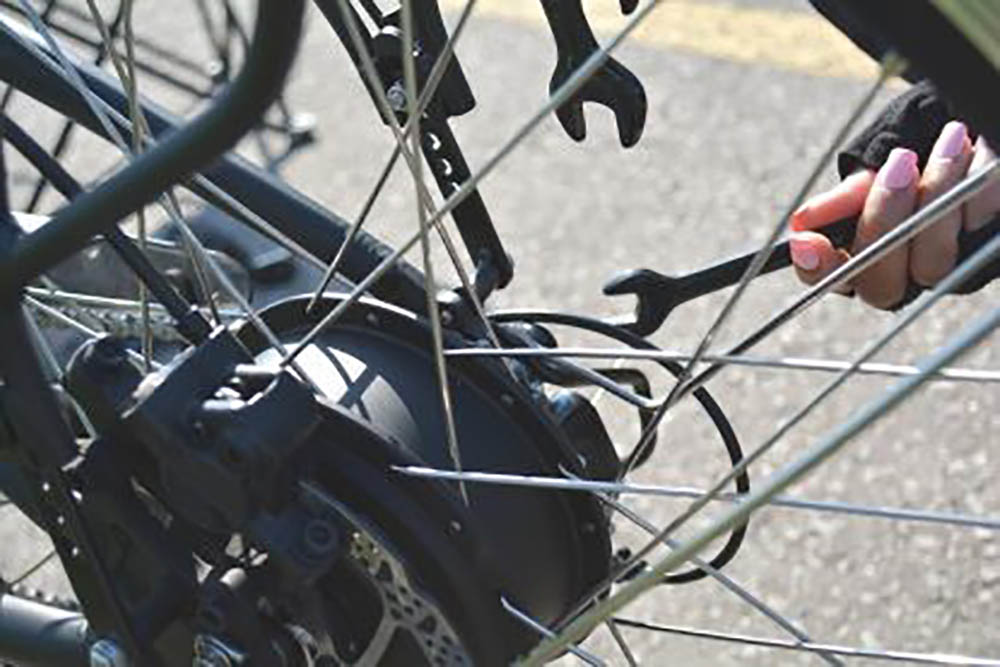How to troubleshoot and fix an electric bicycle
Electric bicycle is a reliable way to get around, whether you need to get to work or want to explore the great outdoors on two wheels. However, just like regular bicycles, e-bikes require occasional maintenance and repairs. So having some guidance on how to fix electric bike problems is critical.
Controller
The e-bike controller connects the a lots of electrical components of your bike, such as the motor, throttle, pedal assist, battery, sensors and LCD. It’s basically like a little computer that coordinates the overall function of the bike. Various problems can affect the controller, such as faulty wiring and other loose connections, an on/off switch that doesn’t work, or a controller fuse or circuit breaker that doesn’t work properly.
No matter what make, type or model of e-bike there are some common problems that can occur. Here are some of the problems you may encounter as an e-bike owner, along with a quick DIY troubleshooting guide so you know how to fix each one.
Let us take these steps to check the controller problem:
1. First check the power switch. If it is not in the “on” position, turn it on.
2. Check for any incorrect connections, disconnections or loose wiring. If you see improperly connected wires, you can reconnect them yourself. Most bikes are color coded for wiring (so the blue wire matches the blue port or outlet).
3. If the controller has a circuit breaker, reset the breaker. You can do this by pressing it. Note that the circuit breaker is there to protect the system, so if it keeps cutting out, there may be a bigger problem that requires replacing the whole system.
4. If the e-bike has a fuse, check to make sure it is not blown. You can remove the fuse and hold it up to the light. You should be able to see if it is blown. If it is, you will need to replace it.

Pedal assist system
PAS helps to provide forward momentum to the bike while you are pedalling. Most bikes have different levels of pedal assist, providing different levels of support. PAS can fail due to a power cut or inconsistent power supply. Depending on the type of system, problems with the bike’s pedals, sprockets, chain paddles or wheel connections may be the cause of intermittent power. Problems with the magnetic rings and sensors on the front sprocket may also be the cause.
Here are the ways to find out what’s causing your PAS problems:
1. Check for any loose parts or connections, if you have recently adjusted mechanical parts on your bike, such as the sprocket or chain paddles.
2. Look at the magnetic ring on the front sprocket of the bike. It should be positioned so that the magnet and sensor are aligned.
3. If the magnet ring has been pushed down, or is dirty, it may need adjusting. You can adjust the magnet with a flat head screwdriver by applying gentle pressure to bring it closer to the sensor.
4. If the above steps don’t work, you should go to a bike shop for professional help. They can identify, remove and replace the faulty part.

Throttle
Some e-bikes have a throttle assist and a pedal assist system (PAS). Throttle Assist activates the motor even when you are not pedalling, independently powering the bike to move it forward.
The throttle is the thing that activates this mechanism. If something goes wrong with the throttle, the throttle assist function will not work. In most cases the throttle fails because it has been overused. If you press the throttle for too long, it can get stuck in position and cannot be restored. As a result, the throttle may become damaged or loose over time. You may notice that the throttle assist simply cuts out while you are riding the bike.
Below are the steps to troubleshoot the throttle:
Check the position of the throttle (next to the handlebars of the bike). A failed throttle will usually be stuck in the rearmost position, rather than popping back into place.
Pull the throttle back into position by hand. With the power off, push the throttle to the furthest back position and see if it pops back into place immediately or lags.
If the throttle does not pop back into place or pops back very slowly, you will need to replace it.
Battery errors
If the e-bike controller is the equivalent of the vehicle’s brain, you could say that the battery is like the heart of the e-bike. It keeps the bike’s motor running and enables the PAS and throttle assist systems to work. If the battery is not charged, you will not be able to use the full functionality of the bike. For example, the bike may not start or the power may be constantly cut off. The battery of an e-bike may not be charged for various reasons. The fuse may be blown, the battery may be depleted by charging too frequently, or the battery pack may simply be old or defective. Another possibility is that the battery’s pins, which act as connectors for the
charging port, are not placed correctly, so when the battery is plugged in the circuit is not completed, which means it is not charging.
Try these steps to troubleshoot the battery
management system:
1. Start with the basics and check the battery charger. Plug it into the wall and see if any indicator lights come on. For example, if the indicator light does not come on when the charger is plugged into the wall, you may have a defective charger.
2. Sometimes the problem may not be with the charger, but with the charger port. To check this, unplug the charger and insert the battery into the charger port. Check the indicator light. If it doesn’t light up, the wiring to the charger port may be faulty and needs to be replaced.
3. Next, check the voltage of the battery. If the LEDs on the e-bike and its control panel do not light up, the battery may not be charging. You can use a voltmeter to check the voltage of the battery. We will explain how to do this in more detail below.
4. If the battery is charged but fails during use, it may be overloaded (this also poses a risk of overheating). You can solve this problem by pedalling harder on the bike or by reducing your use of pedal assist. Battery overload can also be caused by low quality batteries or premature ageing (a good battery should have a life expectancy of three to five years). If an e-bike battery continues to overload despite reduced use of PAS, it may need to be replaced.
5. Look at the battery’s pins. These pins allow the battery to complete the circuit when it is plugged into the charger. This is how the battery gets its power. If the pins are misaligned, the circuit cannot be completed and charging will not occur. You can check that the pins are not misaligned and use a spanner to realign them.

Motor issues
An e-bike rides much the same as a regular bike, though one obvious difference is that it puts out a lot more power. And with great power comes great responsibility.
The first and biggest thing is to use your gears like you would a normal bike to ensure a long life for the motor. Quite often people rely on the torque of the motor to get them going and tend to sit in a hard gear letting the motor do all the work. This is bad for a number of reasons; it’s a less efficient gear to be in, draining battery power faster, and it puts more strain on the motor. Motors drive the main drive sprocket via a belt or often a plastic cog inside the motor housing, which over time can wear, become noisy and/or break. Just because you can rely on the motor for low down torque doesn’t mean you should.
Electric bike motors are tuned to be most efficient at the same cadence as the human body; this is what helps them feel natural and easy to ride. A cadence of 75-100rpm is the sweet spot for motor efficiency – riding within this range will use less juice from the battery since the motor isn’t struggling to keep up. Remember, if your legs don’t like pushing that hard a gear, neither does your motor. Many e-bike handlebar computers can be customized to display cadence on screen so it’s easier to see your cadence and stay in this efficient zone.
Most e-bike motors these days are pretty well sorted however as with anything, they can break. Like any electronic device, they can randomly die, sometimes as a result of a software issue, sometimes water ingress, sometimes maybe just a bad solder joint. Since they’re sealed units where the warranty is void if opened, there’s often no real way of knowing what the problem is. If your bike is not covered under warranty, then a new motor can cost around $1000 – one of the many reasons I suggest buying brand new from a reputable brand.

Brakes
Your e-bike brakes are key to safe riding and ensure you can stop when necessary. There are different types of e-bike braking systems (we talk about the various types of brakes). The reasons why your e-bike brakes fail can vary depending on the type of brake system, so it’s important to know what you have. Regardless of the type of brake system, e-bike brakes will wear out over time. Factors such as external dirt, debris entering the brake system and poor brake calibration can make the problem worse. If the brake pads or rotors are damaged or worn, the brakes may not be as smooth or sharp.
To troubleshoot e-bike brakes, follow these
steps:
1. If the brakes suddenly stop working, check the brake disc for debris such as dirt or dust. Clean off any dirt and see if
the problem improves.
2. Look at the brake pads and rotors and scan for signs of wear and tear, such as scuffs and cracks. They may need replacing.
3. Check the brake lever or cable adjuster on your e-bike. If it is loose, it may need to be tightened to make the brakes more sensitive.
4. A related problem may be the brake motor inhibitor. If the bike has been dropped or bumped, the switch on the motor inhibitor may be stuck in the “on” position. Check that the brake levers are not stuck and try to move them. If you can’t, you may need to replace them.
5. If you’re not sure what the problem is, take your e-bike to a professional bike mechanic. They can determine if you need to replace parts or the entire brake system.
Other e-bike tips
The more you know about your e-bike, the better you can take care of it – and the longer it will last. Use the following steps to check your e-bike’s functionality.
How to check your e-bike’s battery voltage
1. The battery voltage of your e-bike determines its power. If the battery isn’t capable of its full voltage capacity, it may be old and needs replacing – or, if you’re dealing with a new e-bike, the battery may be defective. It’s good to identify defects immediately while your bike is still under warranty.
2. You can check the voltage of your e-bike battery with the help of a voltmeter or multimeter. Start by attaching the prongs of the device to the battery, aligning the positive and negative sides accordingly. Alternatively, you can fix the voltmeter to the charger connector of the battery.
3. The voltmeter will tell you if the battery is depleting faster than it should. If it is depleting too quickly, determine when the battery was last charged.
4. If the battery pack has not been charged for 6 months or less, it may need to be replenished. If the battery pack has not been charged for more than 6 months, it may be defective.
How to test an e-bike battery charger
Sometimes the problem is not the battery, but the battery charger. This is an easy problem to troubleshoot. You don’t even need any tools to do it. Plug the battery charger into an electrical outlet. Ideally, the indicator light will come on and stay on steadily. However, if there is a problem, the indicator light may not come on or may flash intermittently. This indicates that the charger is not getting the power it should from the socket. You can double check this using a voltmeter. The voltmeter should read slightly higher than the voltage specified for the charger. If the charger reads lower than the voltage, you will need to replace the charger.
How to diagnose wiring problems on your e-bike
The various components of your e-bike – such as the controller, motor and battery – are connected using a wiring system. These wires carry electricity between these critical components, so if they are loose, frayed, disconnected or otherwise faulty, your e-bike may have mechanical problems. Consult your e-bike owner’s manual to identify and locate the various wiring systems. For example, the e-bike controller (the ‘brain’ of the bike) is a wired component.
Check that the wires are not loose or incorrectly positioned. This is simply because the wires are colour coded: blue wires fit into blue ports, red wires fit into red ports, and so on. In some cases, loose wiring may be the problem. In other cases, the wires may have been damaged.
You can use a voltage tester to check the integrity of the wire by moving it along the length of the wire to identify where the voltage has diminished – a sign of damage. Depending on the problem, you may need to replace the wire. This is a job best left to a specialist repair shop. They will know which parts to replace and will be able to ensure they are fitted correctly.
Summary
This guide is not meant to be exhaustive, but should provide a good starting point. One of the main takeaways is that while there are certain errors that can be solved at home relatively easily, e-bikes are definitely not as home-serviceable as a non-electric bike and often require a trip to the dealer to figure out problems. Quite often it’s not entirely clear where an error may be coming from, particularly when the bike doesn’t turn on and therefore cannot be digitally diagnosed. Cases such as this often require parts to be thrown at them until something works, which obviously is difficult when you don’t have several bikes worth of spare parts like a decent e-bike dealer should.
When diagnosing problems, make sure to approach them methodically and make note of any repeating factors — for example, an error happens when I do this with the bike — and record any error codes that the bike displays. Contacting a dealer is usually the best thing to do, and often they can provide more specific information on your model of bike, sometimes diagnosing things over phone or email.
For my electric bike blog, your comments and feedback are invaluable. They help me identify and fix any issues with the blog content, and let me know what you as readers are interested in regarding e-bikes.
One of my goals in creating this blog is to build an interactive community, so I sincerely invite you to leave your valuable opinions and feedback in the comments below each article.
 Shuangye ebike
Shuangye ebike
